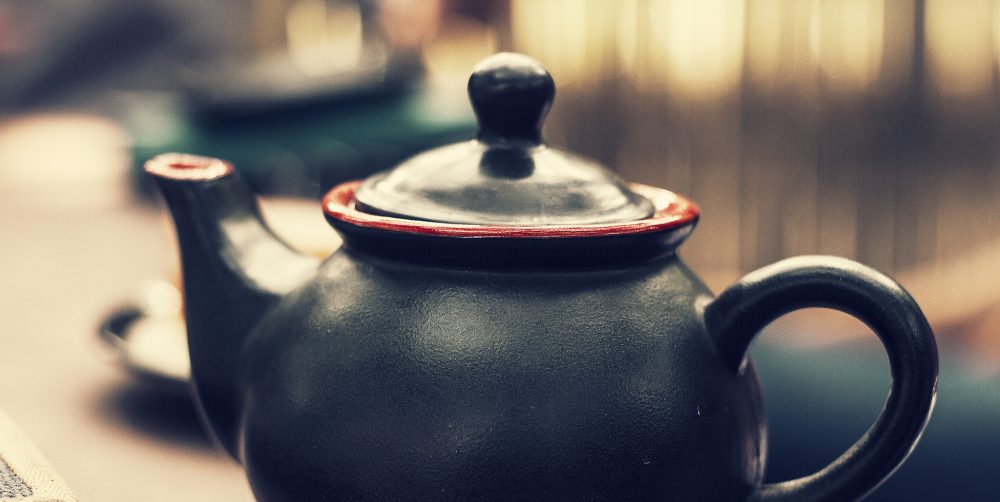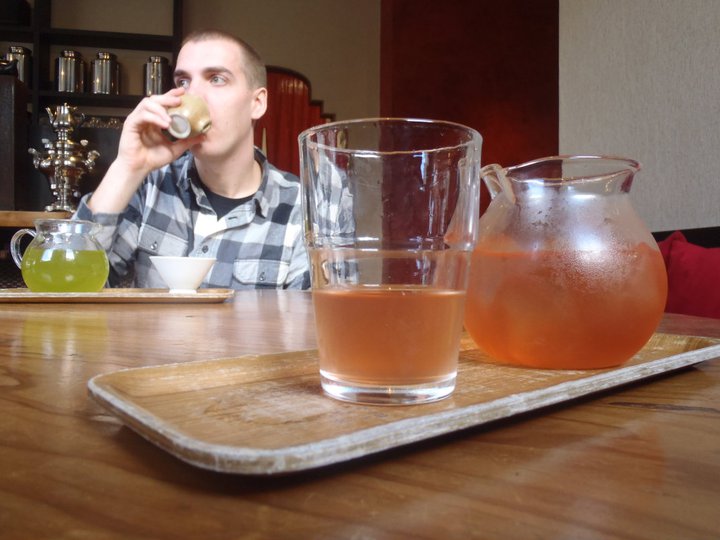The most common questions I get from people are about the different kinds of tea. What is the difference between green and black tea? What is white tea? Have you ever heard of red tea? It seems to be a fairly universal question, so I thought I would try to tackle it. Below is a summary of some of the most common types of tea: black, oolong, green, white, herbal, red, and mate.
Before I get into the types of tea, I should probably explain the difference between “true” tea and herbal teas (tisanes). All of the “true” teas (black, oolong, green, white) come from the same plant: camellia sinensis. That’s usually pretty surprising to people given the differences in look, smell, and especially taste of the different types, but its true! What separates the types of tea is how they are harvested and processed, as well the area they are grown in. With that out of the way, here we go:
Black Tea
This is probably what most people think of when they picture tea. It makes a dark brown, slightly reddish, liquid when brewed, and is the tea with the highest caffeine content. It is the most heavily processed (oxidized) of the traditional teas and is the usual culprit for many people associating tea with a bitter aftertaste. It typically has dark, roasted, or earthy flavors, and is brewed at the highest temperature (≈212 degrees) of all of the teas. Because of its strength, it is often served with creme and sugar similar to coffee. It’s most popular in European countries, and is also probably the most popular in the US. It’s other claim to fame is that it is traditionally used as the base for most iced tea. Popular varieties you may have heard of are Earl Grey and English Breakfast.
Oolong Tea
Oolong tea is relatively unknown in the West compared to the other teas, although it has gained some ground with its reputation as a “slimming tea” that helps with weight loss. It is also oxidized in preparation, although the amount of processing varies greatly based on the variety. It typically will have a blend of the grassy sweet flavors of green tea with the darker roasted flavors of black tea, with one or the other coming through stronger based on how long it was processed. It is prepared between 180 and 212 degrees, and has a moderate amount of caffeine.
Green Tea
Green tea is a relatively well known tea. If has a moderate amount of caffeine, and gets its name from the color of its leaves as well as the brewed liquid, which varies from green to a light greenish yellow. It is very popular in Asian countries and there are a multitude of varieties. It’s taste is typically a smooth, grassy, slightly sweet flavor and it is often paired with fruit. It is prepared at a moderate temperature (≈180 degrees) typically for between 3-5 minutes.
White Tea
Another of the lesser known teas, white tea is the least caffeinated and is also processed the least. White tea comes from the youngest buds and leaves of the tea plant. It gets its name from the young buds which often still have silver-white hair on them, which are not seen on other teas. White tea has very subtle flavors, often lightly sweet or grassy. Like green tea, it is prepared at a lower temperature (170-180) but for a longer time (5-7 minutes) than green.
Herbal Tea
Herbal tea, also called tisanes, is a catch all category for any tea-like drink not made from the camellia sinensis plant. It can contain a variety of things, including fruits, herbs, spices, flowers, and other unique plants. Some forms of herbal tea you may have heard of that are popular in the West are jasmine or chamomile tea. Some forms of this tea, most notably rooibos and mate tea, are well known in their own right, but are still technically herbal teas. Appearance, flavors, steeping temperatures, and times all vary greatly with the different varieties of herbal tea. Many are caffeine free and are used as a relaxing drink.
Red Tea (Rooibos)
Red tea is a little tricky, becasue in the far east, black tea was traditionally referred to as red tea. Typically in the West however, red tea refers to an herbal tea: rooibos (pronounces ROY-bos). Rooibos gets it’s name from the Afrikaans word meaning “red bush” It comes from a small bush native to South Africa has been a very popular drink there for centuries. It doesn’t contain caffeine, and produces a red liquid when brewed. It tastes similar to black tea, with a little bit more sweetness. It can be served with milk or sugar, although it traditionally is served with a slice of lemon and sugar or honey.
Mate Tea
Mate tea is a herbal tea that originates from South America, most notably Argentina and Uruguay. It is one of the few herbal teas that contains caffeine and is known for being an “invigorating” drink. It has distinct earthy flavor, but is also sweeter than most traditional teas. In South America it is traditionally enjoyed from a gourd with the leaves still in it, through a filtered straw called a “bombilla.”

